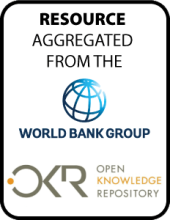Land Library Search
Through our robust search engine, you can search for any item of the over 73,000 highly curated resources in the Land Library.
If you would like to find an overview of what is possible, feel free to peruse the Search Guide.
/ library resources
Showing items 1 through 9 of 1004.The agricultural and food production sector plays a key role in fighting poverty and food insecurity in Moldova, but is facing critical challenges to modernize and integrate into the international market.
Uganda’s progress in reducing poverty from 1993 to 2006 is a remarkable story of success that has been well told. The narrative of Uganda’s continued, albeit it slightly slower, progress in reducing poverty since 2006 is less familiar.
Sustainable development goals (SDGs)
placed access to basic services at the center of
international development in 2016-2030. Out of 17 goals,
five address the access of poor people to basic services: to
This paper assesses the relation between
access to markets and cultivated land in Sub-Saharan Africa.
Making use of a geo-referenced panel over three decades
(1970-2005) during which the road network was significantly
Weather risk and incomplete insurance
markets are significant contributors to poverty for rural
households in developing countries. Weather index insurance
has emerged as a possible tool for overcoming these
This issue includes the following
headings: Changes in Poverty and Female-Headed Households in
Africa; Growth and Capital Inflows in Africa; Growth and
Capital Inflows in Africa; Vulnerability to Climate Change
To explain persistent gender gaps in
market outcomes, a lab experimental literature explores
whether women and men have innate differences in ability (or
attitudes or preferences), and a separate field-based
Participatory community development
programs are designed to match government investments with
local needs. In Morocco, where issues of inequality and
poverty are high on the national agenda, a community
Governments must decide how to allocate
limited resources for infrastructure development,
particularly since financing gaps have been projected for
the coming decades. Social cost-benefit analysis provides



